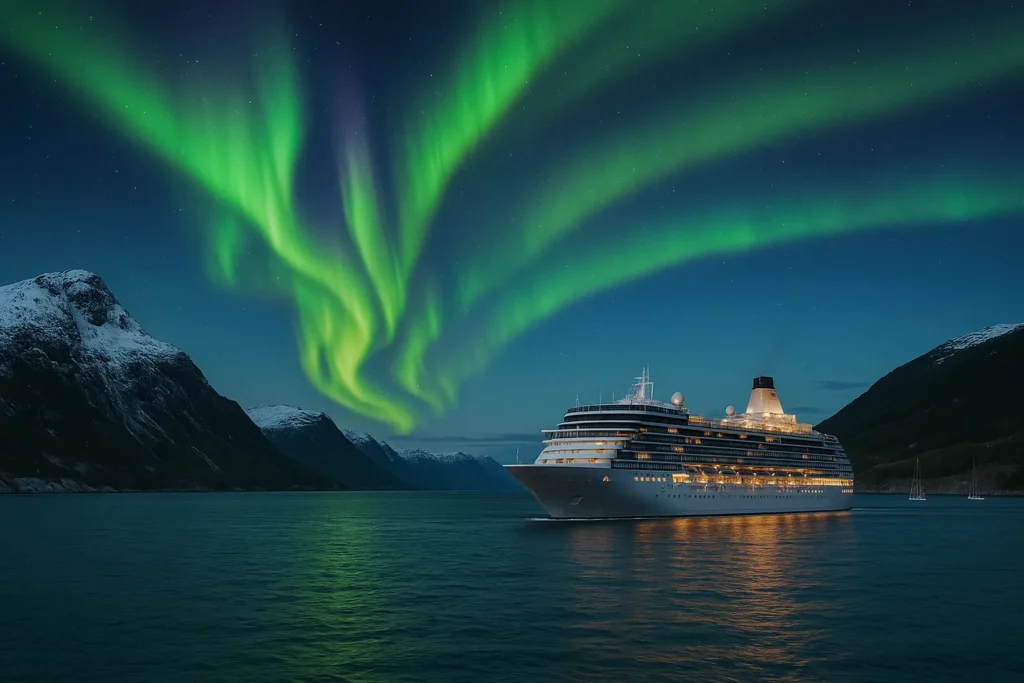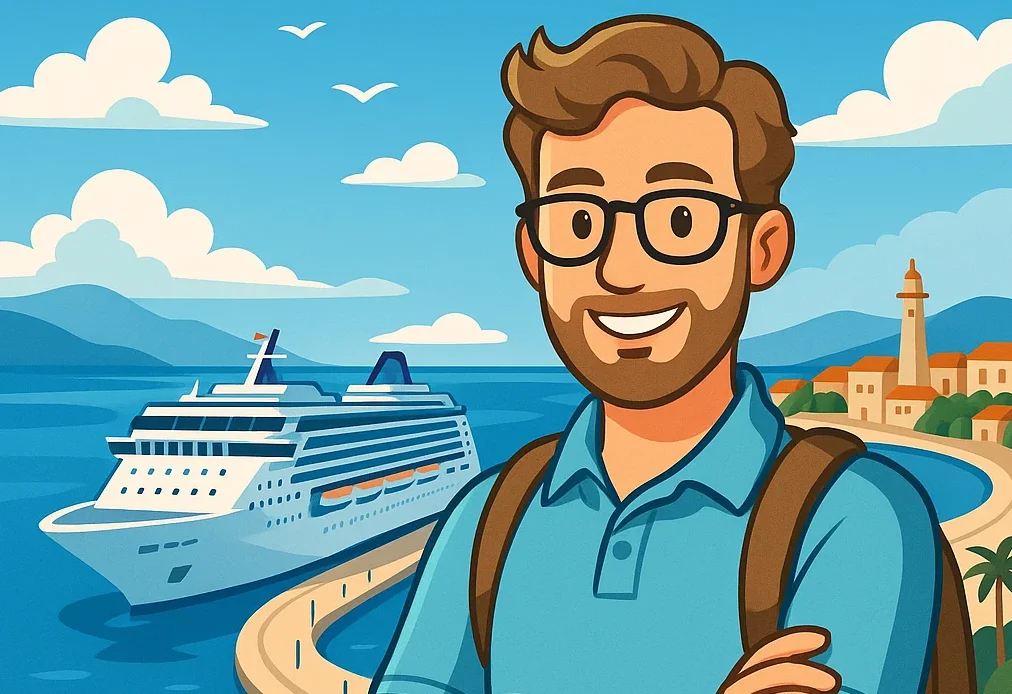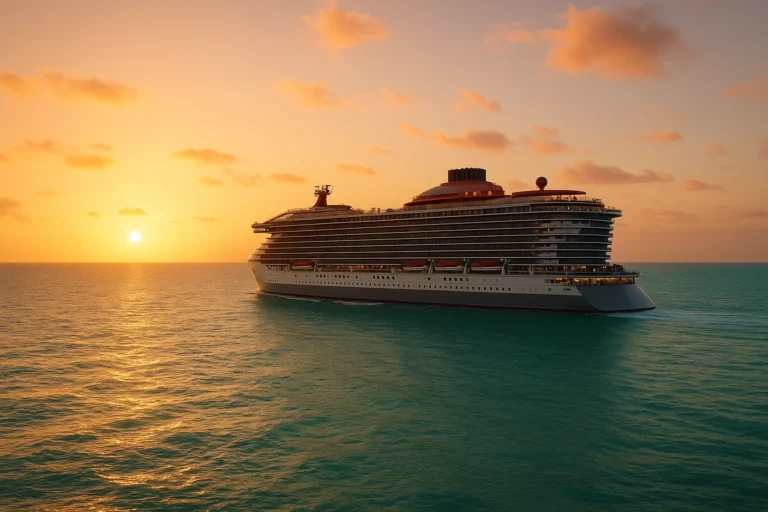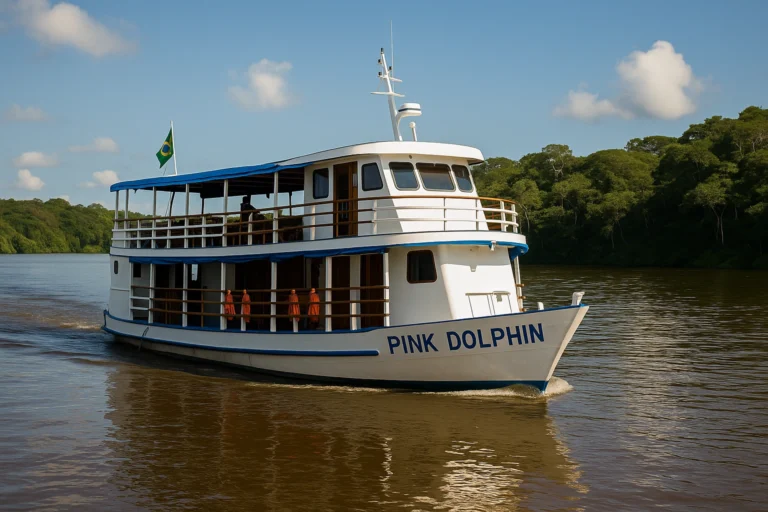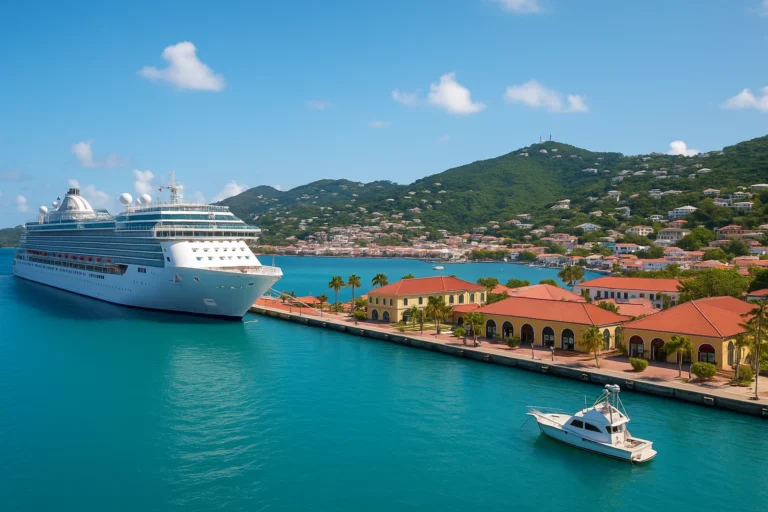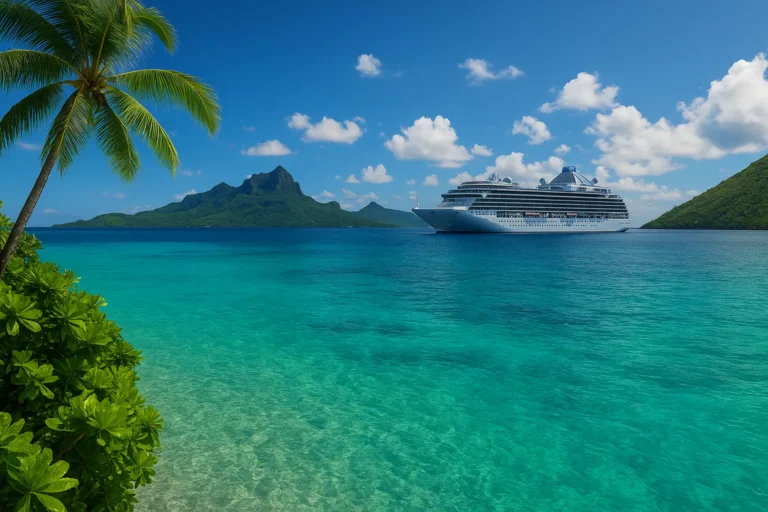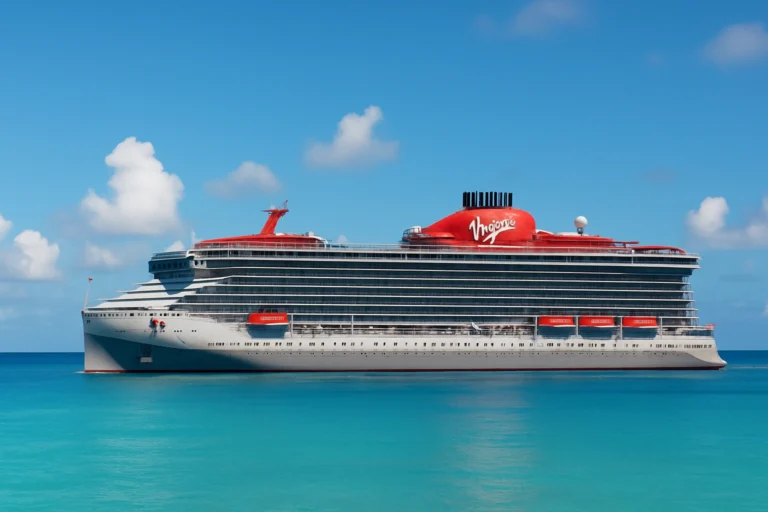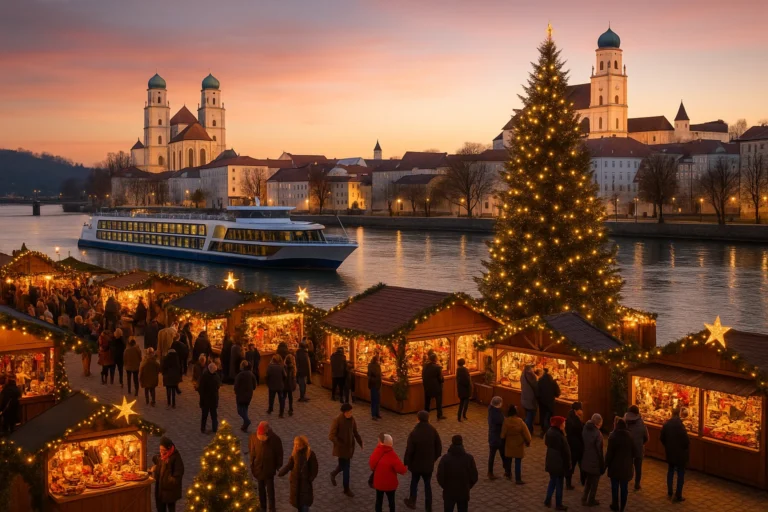Best Time for a Northern Lights Cruise (Iceland & Norway)
Imagine vast, dark skies painted with ethereal green, pink, and purple ribbons of light, dancing above snow-capped fjords or dramatic volcanic landscapes. A **Northern Lights cruise to Iceland or Norway** offers one of the most magical ways to witness the aurora borealis, away from city light pollution and with unique vantage points. But when is the **best time** to embark on such an extraordinary voyage to maximize your chances of seeing this celestial spectacle?
—
Understanding the Aurora Borealis: When the Lights Come Alive ✨🌌
The Northern Lights (aurora borealis) are a natural phenomenon caused by solar particles colliding with the Earth’s atmosphere. For them to be visible, two primary conditions must be met:
- **Darkness:** The sky needs to be truly dark, which means avoiding summer months with their “midnight sun” and seeking periods of longer nights.
- **Clear Skies:** Cloud cover is the aurora’s biggest enemy, as it obscures the view.
Solar activity also plays a crucial role; stronger solar winds result in more vibrant and frequent displays.
—
Best Time for a Northern Lights Cruise: Seasons & Opportunities 🗓️🚢
The prime season for chasing the Northern Lights in regions like Iceland and Norway is generally from **late September to late March**. During these months, the nights are long and dark enough for the aurora to appear. However, each part of this window offers a slightly different experience:
1. Autumn Cruises (Late September – October): The Shoulder Season Sweet Spot 🍂
- **Why it’s good:** This period is often considered a fantastic time for a Northern Lights cruise.
- **Increasing Darkness:** Nights are getting progressively longer, offering ample hours of darkness.
- **Milder Temperatures:** While cool, temperatures are generally less extreme than deep winter, making shore excursions more comfortable.
- **Stunning Landscapes:** The autumn foliage in some areas, combined with early snow on mountain peaks, creates incredibly scenic backdrops.
- **Fewer Crowds (early autumn):** Early in this period, it’s still shoulder season, meaning potentially fewer tourists than peak winter.
- **Open for Land Excursions:** Many land-based activities are still readily available and comfortable to participate in.
- **Potential Considerations:**
- **Less Consistent Darkness:** Compared to deep winter, nights aren’t quite as long, potentially reducing the viewing window.
- **Higher Chance of Cloud Cover:** Some areas might experience more rain or cloud cover in autumn, which can obstruct views.
- **Best for:** Travelers who want a balance of aurora viewing opportunities with more comfortable temperatures for daytime exploration and fewer severe winter conditions.
2. Winter Cruises (November – March): Peak Aurora Season ❄️✨
- **Why it’s good:** This is often considered the absolute best time for a Northern Lights cruise due to maximum darkness.
- **Maximum Darkness:** Nights are at their longest, providing the widest window for aurora activity. In the far north, you might only get a few hours of daylight.
- **Highest Probability:** Statistically, with more dark hours, your chances of seeing a strong display are higher.
- **Winter Wonderland:** Experience stunning snow-covered landscapes, frozen waterfalls, and unique winter activities.
- **Specific Winter Activities:** Opportunities for dog sledding, snowmobiling, ice caving, and skiing.
- **Potential Considerations:**
- **Extreme Cold:** Temperatures can drop significantly below freezing, requiring serious cold-weather gear.
- **Shorter Daylight Hours:** Limited daylight means fewer hours for scenic cruising or extensive shore excursions.
- **Rougher Seas:** Winter can bring choppier waters, especially in the North Atlantic.
- **Higher Demand/Prices:** Cruises during peak winter months can be more expensive.
- **Best for:** Dedicated aurora hunters who prioritize viewing the lights and don’t mind the cold, or those seeking a true winter adventure.
Times to Avoid:
- **Late April – Mid-September:** During these months, especially in the far north of Iceland and Norway, you experience the “midnight sun” phenomenon. There isn’t enough darkness to see the Northern Lights, as the sun barely sets or stays above the horizon.
—
Factors Influencing Your Northern Lights Cruise Experience factores 📊🌟
While timing is key, other elements play a crucial role in your aurora hunting success:
- **Location, Location, Location:** Cruises go far north, away from city light pollution, which is essential for optimal viewing. Ships can move to clearer skies if localized cloud cover is an issue.
- **Clear Skies:** Even during peak season, clouds can obscure the aurora. Choosing a cruise itinerary that covers a wide area (like the Norwegian coast or circumnavigating Iceland) increases your chances of finding clear patches.
- **Solar Activity (Kp Index):** The strength of the aurora varies with solar activity. While unpredictable far in advance, higher Kp index forecasts mean stronger potential displays. Many ships have experts on board to monitor this.
- **Cruise Duration:** A longer cruise (e.g., 7-12 nights) provides more opportunities over multiple nights to witness the lights, increasing your overall chances.
- **Ship’s Design:** Some ships designed for polar regions have open decks and specific viewing lounges optimized for aurora watching.
—
Essential Tips for Your Northern Lights Cruise Adventure 🎒📸
Preparation is key for an enjoyable and successful Northern Lights cruise:
1. Packing for the Cold: Layers are Non-Negotiable!
- **Base Layers:** Moisture-wicking thermal underwear.
- **Mid-Layers:** Fleece jackets, wool sweaters, down vests.
- **Outer Layers:** Waterproof and windproof winter coat (insulated), waterproof pants.
- **Extremities:** Warm hat (covering ears), thick gloves/mittens (ideally with thinner liners), wool socks.
- **Footwear:** Insulated, waterproof boots with good grip.
- **Accessories:** Scarf or neck gaiter, hand/toe warmers.
2. Onboard Experience: Maximizing Viewing Opportunities
- **Aurora Wake-Up Calls:** Many cruise lines offer a service where you can sign up for a wake-up call if the Northern Lights appear during the night. Don’t miss this!
- **Deck Viewing:** Spend time on the open decks away from artificial light. Dress warmly and bring a hot drink.
- **Expert Lectures:** Some cruises offer onboard lectures by aurora experts or astronomers to enhance your understanding.
3. Shore Excursions: Beyond the Ship
- **Land-Based Viewing:** Consider booking dedicated aurora hunting excursions on land. These often take you further into the wilderness, away from any remaining light pollution, sometimes with bonfires or hot drinks.
- **Winter Activities:** Embrace the season with activities like dog sledding, snowmobiling, ice fishing, or visiting ice hotels (Norway).
4. Photography Tips: Capturing the Magic
- **Camera:** A DSLR or mirrorless camera with manual settings.
- **Lens:** A wide-angle lens with a low aperture (f/2.8 or lower) is ideal.
- **Tripod:** Absolutely essential for long exposures.
- **Extra Batteries:** Cold drains batteries quickly. Keep spares in a warm pocket.
- **Settings:** High ISO (800-3200+), wide-open aperture, long exposure (10-30 seconds). Practice before you go!
5. Manage Expectations: Nature is Unpredictable
- While timing increases your chances, seeing the Northern Lights is never guaranteed. Embrace the entire experience of cruising through stunning landscapes, and consider the aurora a magical bonus.
—
❓ Frequently Asked Questions (FAQ) ❓
Q: What are my chances of seeing the Northern Lights on a cruise?
A: While never 100% guaranteed, taking a cruise during the peak season (Sept-March) significantly increases your chances. Cruises move away from light pollution and can sometimes navigate to clearer skies, offering better odds than land-based tours alone.
Q: Is an October Northern Lights cruise too early?
A: No, October is an excellent time! While not as dark as deep winter, nights are long enough, temperatures are milder, and autumn colors can be spectacular. It offers a good balance of aurora viewing and comfortable exploration.
Q: What should I wear on deck for Northern Lights viewing?
A: Layers are crucial. Start with thermal base layers, add fleece or wool mid-layers, and finish with a waterproof and windproof insulated outer coat. Don’t forget a warm hat, gloves/mittens, and insulated boots.
Q: Do cruise ships offer wake-up calls for the Northern Lights?
A: Many cruise lines operating Northern Lights itineraries do! It’s a popular service where you can opt to be woken up if the aurora appears, even in the middle of the night, so you don’t miss a potential display.
Q: Is a Northern Lights cruise worth it compared to a land trip?
A: Cruises offer unique advantages: you travel to remote, dark locations without needing to change hotels; you have access to onboard amenities; and the ship can sometimes reposition to find clearer skies. It’s often a more comfortable and comprehensive way to experience the Arctic region.
—
Conclusion: Chasing the Aurora on an Unforgettable Arctic Cruise 🌠✨
Embarking on a Northern Lights cruise to Iceland or Norway is a bucket-list experience, and timing your trip during the dark, clear months from **late September to late March** significantly enhances your chances of witnessing nature’s most spectacular light show. Whether you choose the milder autumn for its comfort or the deep winter for maximum darkness, careful packing and managing expectations will ensure you’re ready for an unforgettable journey through breathtaking Arctic landscapes. May your skies be clear and your lights be vibrant! ❄️🚢


